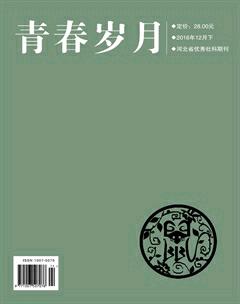Corpus Based Study of Semantic Prosody:Methods and Meanings
Sun+Lei

Abstract:With the development of corpus linguistics and the advances of corpus-based research, semantic prosody has aroused more attention and the study of semantic prosody has been growing. The corpus based study of semantic prosody brings more significance especially for ESL/EFL learners interlanguage study. This paper mainly introduces the definition of semantic prosody and the research method of corpus based study of semantic prosody. It also elaborates on the meanings of corpus based study of semantic prosody for ESL/EFL learners interlanguage study.
Key words:semantic prosody, corpus based study, language learning
【摘要】隨着语料库语言学与语料库研究方法的发展,语义韵的研究再次进入人们的视野并得到更多关注。语义韵的研究尤其对于二语习得者的语言对比研究有着重要意义。本文主要介绍语义韵的基本概念、基于语料库的英语语义韵研究的主要研究方法及其对于语言研究者的意义。
【关键词】语义韵;语料库方法;语言习得
1. Introduction
Semantic prosody is a particular term used in corpus linguistics, describes the way in which certain words collocating with other words as well as collocating with some semantic classes of words which are positive or negative in meaning. Sinclair(1991)explained it as “many uses of words or phrases show a tendency to occur in a semantic environment”. Stubbs(1996)categorizes semantic prosody into three negative prosody, neutral prosody or mixed prosody and positive prosody. For example, in the native speakers corpus, the phrase “set in” is often collocated with word such as “rot, decay, prejudice, infection, ill will etc.” which carry unpleasant meanings and the like, accordingly, “set in” is most often in a negative semantic prosody(Sinclair 1991);for example, the word “incidence” is mostly associated with some words in bad meaning, such as “explosion, air crash, earthquake” and etc. therefore, incidence has an obvious tendency of negative prosody. In recent years, the researches of semantic prosody have been growing in and abroad. They are mainly applied in the fields of second language learning, comparative study of native and second language learning, semantic prosody of synonyms, and study of lexicography.
2. Corpus Based Study of Semantic Prosody
Corpus based study of semantic prosody is the combination of semantic prosody and the corpus linguistics. It studies a worlds or phrasess emantic prosody based on the data in large corpus. Three methods are generally used in the corpus study of semantic prosody: corpus based approach, corpus driven approach and the combination of corpus based and corpus drive approach. Corpus based approach involves creating colligation of some key words. Researcher first picks up some concordance of the key works and create the colligation based on certain grammatical rules and functions. For example, “N+of+N” is a colligation. Setting up the colligation of key word “occurrence” can researchers find all the collocates in this pattern and further find out the collocations of the key word; the second method is to number the node words through corpus driven method. Set up the span, and pick up collocates of key word within the span. Find out the obvious and classical collocate with the use of T score, M score and MI score. Analysis and conclusion of the semantic features of the obvious collocates; the third methods is combing the first and second one and concluding the semantic structure of the key words.
3. Meanings of Corpus Methods Study of Semantic Prosody
Before large corpus were set up,the study of semantics are more mainly relying on the small text and the assumption and intuition of native speakers. With the development of modern corpus linguistics and the set up large corpus, language learners and researchers could get access to the large scale of date available. Corpus provides a large number of collocation examples in the form of concordance which enables researches to uncover the deep features of the vocabulary, including the semantic prosody. For second language learners, it is more convenient and valid to learn about the language use patterns of native speakers and discover the difference between their language use and native speaker through the comparative study between native and non-native corpus. In a word, by adopting corpus based method, with access to large data of natural language resources. It is possible for language researchers to compare and analyze complex patterns of language use and come to more consistent and reliable analysis.
4. Conclusion
With combination with corpus methods, the study of semantic prosody makes substantial contribution to a wide range of research topics in corpus linguistics, language teaching, lexicography and cross-linguistic studies, especially for ESL/EFL learners. It is necessary to deepen and widen the researches in this field.
【參考文献】
[1] Louw, B. Irony in the text or insincerity in the writer:The Diagnostic Potential of Semantic prosodies[C]. Text and Technology: In Honor of John Sinclair. Amsterdam: John Benjamins,1993:157-176.
[2] Sinclair, J. Corpus, Concordance, Collocation[M]. Oxford: Oxford University Press, 1991.
[3] Stubbs, M. Text and Corpus Linguistics[M]. Oxford: Blackwell Publishers, 1996:176.
[4] 冯跃进. 基于语料库的同义词差异性特征调查[J]. 山东外语教学, 2000(4):8-12.
[5] 张继东, 刘 萍. 基于语料库同义词辨析的一般方法[J]. 解放军外国语学院学报, 2005(6):49-52.
[6] 卫乃兴. 语义韵研究的一般方法[J]. 外语教学与研究, 2002(4):300-307.
[7] 卫乃兴. 基于语料库学生英语中的语义韵对比研究[J]. 外语学刊, 2006(5):50-54.
【作者简介】
孙磊(1982—),女,内蒙古工业大学外国语学院讲师,主要研究方向:英语教育、语料库语言学。

